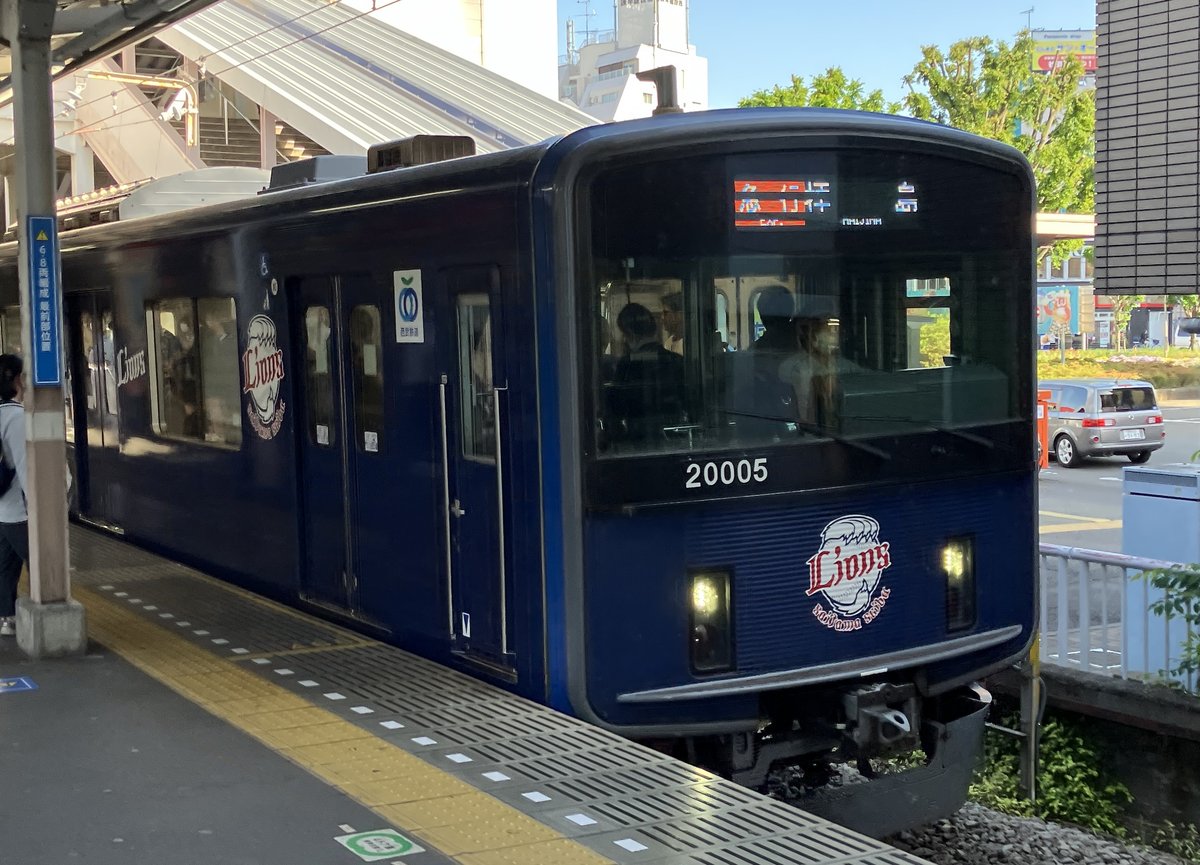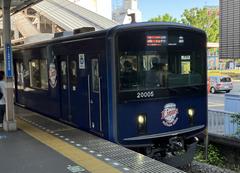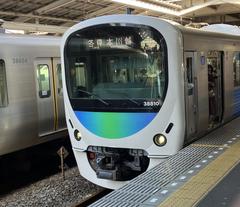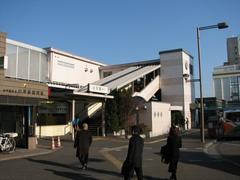
Kodaira Station Tokyo Visiting Hours, Tickets, and Nearby Attractions Guide
Date: 14/06/2025
Introduction to Kodaira Station in Tokyo
Kodaira Station, located in the tranquil western suburbs of Tokyo, stands as a vital transit hub and a gateway to the area’s blend of urban convenience, cultural heritage, and green spaces. Serving both the Seibu Shinjuku Line and Seibu Haijima Line, this station connects thousands of commuters and visitors daily to central Tokyo and the surrounding region. Established in 1927, Kodaira Station has grown into a centerpiece of community life, offering easy access to local attractions like Ajisai (Hydrangea) Park, Kodaira Furusato Village, and Kodaira Central Park—each reflecting the unique spirit of the area (Wikivoyage; MATCHA; Japan Travel).
The station is equipped with modern amenities, including elevators, escalators, and tactile paving, ensuring comfortable access for all passengers. Ticketing is straightforward, with automated machines, staffed counters, and support for IC cards like Suica and PASMO (Seibu Railway Official Site). Beyond its practical function, Kodaira Station acts as a portal to local events, cultural experiences, and the natural beauty of Tokyo’s western suburbs.
This comprehensive guide will provide essential information about visiting hours, ticketing, accessibility, nearby attractions, cultural etiquette, and practical travel tips to help you make the most of your visit.
Table of Contents
- Historical Development of Kodaira Station
- Station Layout and Visitor Information
- Nearby Attractions and Visitor Tips
- Frequently Asked Questions (FAQ)
- Summary and Recommendations
- Neighborhood Overview and Local Culture
- Key Attractions and Seasonal Events
- Practical Tips for Visitors
- References and Further Reading
Historical Development of Kodaira Station
Early Beginnings
Opened in 1927, Kodaira Station played a crucial role in transforming rural farmland into a thriving residential suburb during Tokyo’s post-war expansion. Its establishment on the Seibu Shinjuku Line enabled easier access between central Tokyo and the western suburbs, encouraging families and commuters to settle in the area (Wikivoyage).
Modernization and Community Role
Over the decades, Kodaira Station has undergone significant modernization, including the addition of the Seibu Haijima Line, expanded platforms, and improved accessibility features such as elevators and barrier-free pathways (Namu Wiki). Today, the station is not only a transportation hub but also a focal point for community events and seasonal festivals, such as the celebrated Hydrangea Festival in June (MATCHA; JW Web Magazine).
Station Layout and Visitor Information
Visiting Hours
Kodaira Station is open daily from approximately 5:00 AM to midnight. Some station services and shops may have different operating hours, particularly during festival periods.
Ticketing
- Automated Machines: Accept cash, IC cards (Suica, PASMO), and credit cards.
- Staffed Counters: Available for complex transactions or travel assistance.
- IC Cards: Recommended for convenience and seamless transfers throughout Tokyo’s rail network.
Lines and Platforms
The station features two island platforms serving four tracks:
- Seibu Shinjuku Line: Connects to central Tokyo and Saitama Prefecture.
- Seibu Haijima Line: Links to Haijima and Kokubunji.
Accessibility
- Elevators and escalators to all levels.
- Tactile paving for visually impaired passengers.
- Accessible restrooms and barrier-free pathways.
- Staff available for assistance.
Station Exits
- North Exit: Access to residential neighborhoods, shops, and bus stops.
- South Exit: Leads to Ajisai Park, commercial areas, and additional bus connections.
Passenger Flow
Peak commuter hours are typically 7:30–9:00 AM and 5:00–7:00 PM. During major events like the Hydrangea Festival, expect increased crowds and special arrangements.
Nearby Attractions and Visitor Tips
Top Nearby Sights
- Ajisai (Hydrangea) Park: Famous for its vibrant hydrangea blooms in June.
- Kodaira Furusato Village: Open-air museum showcasing traditional farmhouses and seasonal events (Kodaira City Official).
- Kodaira Central Park: Features lawns, playgrounds, and seasonal flower displays.
- Kodaira Green Road: A scenic walking path along the historic Tamagawa Josui canal.
- Kodaira Hachimangu Shrine: A traditional local shrine.
Travel Tips
- Use Suica or PASMO IC cards for efficient travel.
- Visit early during festivals to secure lockers and avoid crowds.
- Translation apps can be helpful; English signage is available but limited in some areas.
- Avoid peak commuter times for a more relaxed visit.
Frequently Asked Questions (FAQ)
Q: What are the station’s operating hours?
A: Generally from 5:00 AM to midnight, with some service variations.
Q: Where can I buy tickets?
A: At automated machines or staffed counters; IC cards like Suica and PASMO are accepted.
Q: Is Kodaira Station accessible for disabled visitors?
A: Yes, there are elevators, escalators, tactile paving, and accessible restrooms.
Q: What are the main attractions near the station?
A: Ajisai Park, Kodaira Furusato Village, Kodaira Central Park, and Kodaira Green Road.
Q: How do I reach central Tokyo from Kodaira Station?
A: Take the Seibu Shinjuku Line to central stations like Takadanobaba in about 20–25 minutes.
Summary and Recommendations
Kodaira Station offers a seamless blend of efficient transit, accessible facilities, and deep cultural heritage. Whether you are commuting or exploring, the station serves as a perfect launchpad for local parks, historical museums, and seasonal events. Enhance your visit by respecting local customs, using IC cards for convenience, and planning your trip around key festivals for a richer experience (Seibu Railway Official Site; Go Tokyo).
Neighborhood Overview and Local Culture
Kodaira is a residential city prized for its serenity, green spaces, and convenient access to urban Tokyo. Community spirit shines through local markets, festivals, and preserved historical sites.
Cultural Etiquette
- Bowing: The common greeting; a slight bow is suitable for most situations (The Art of Gallivanting).
- Shoes: Remove shoes when entering homes, traditional restaurants, temples, or museums.
- Public Spaces: Keep noise to a minimum and carry your trash until you find a bin.
- Temples/Shrines: Purify at the basin, bow before entering, and observe ritual etiquette (Japan Travel).
Key Attractions and Seasonal Events
Major Sites
- Hirakushi Denchu Art Museum: Open Tue–Sun, 10:00 AM–4:30 PM; entry ~300 yen.
- Furusato Village: Open daily, 9:30 AM–5:00 PM; free entry for most exhibits.
- Shosenji Temple: Open daily, 8:00 AM–6:00 PM; free entry.
Parks and Festivals
- Kodaira Central Park: Open dawn to dusk; popular for cherry blossoms in spring.
- Ajisai (Hydrangea) Festival: Held in June, featuring 1,500 hydrangea plants.
- Farmers’ Markets: Regular markets near the station sell fresh produce and local specialties.
Day Trips
- Koganei Park and Edo-Tokyo Open Air Architectural Museum: ~15 minutes by train (Official Museum).
- Kawagoe (“Little Edo”): ~40 minutes away, known for its preserved Edo-period streets (Kawagoe Tourism).
Practical Tips for Visitors
- IC Cards: Buy and recharge at the station for hassle-free travel.
- Bicycle Rentals: Available near Kodaira Station.
- Public Wi-Fi: Accessible at the station; limited elsewhere.
- Cash: Widely used; ATMs at convenience stores and banks.
- Food: Sample local soba, izakayas, and bakeries on the shopping street.
Visuals and Media
For a better orientation, seek maps and images such as “Kodaira Station main entrance,” “Ajisai Hydrangea Park in bloom,” and “Furusato Village traditional buildings” on official tourism sites and travel platforms.
References and Further Reading
- MATCHA: Kodaira Station Guide
- Japan Travel: Explore Kodaira Station
- Triphobo: Kodaira Attractions
- The Art of Gallivanting: Kodaira Culture
- Seibu Railway Official Website
- Go Tokyo: Customs and Manners
- Wikivoyage: Kodaira
- JW Web Magazine: Hydrangea Spots
- Edo-Tokyo Open Air Architectural Museum
- Kawagoe Tourism
Kodaira Station offers a rewarding mix of efficient transportation, cultural discovery, and natural beauty. For personalized travel tips, itinerary planning, and real-time updates, download the Audiala app and follow us for more Tokyo travel inspiration.
































































































































































































































